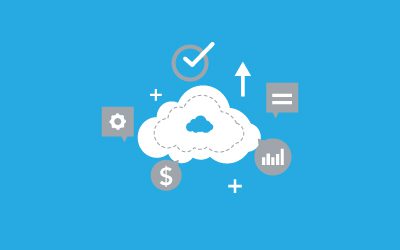Making the move to cloud-based Enterprise Resource Planning (ERP) software requires an investment of time and money. Even in the best-run transitions, the process can be a bit stressful and disruptive. It’s worth it, however, in business terms. Forrester Research, the technology analyst firm, just published a fascinating report called The Total Economic Impact of Acumatica. It is based on Forrester’s proprietary analyst methodology for determining the “Total Economic Impact” of a technology. It measures the cost savings and business benefits delivered by a technology.
Forrester’s goal was to help potential Acumatica customers understand the benefits, costs, and risks associated with the investment. They interviewed Acumatica customers, each with different circumstances before they embraced Acumatica. Some had legacy on-premises ERP solutions they had outgrown. Others had multiple operational software programs to run their businesses. In this case, the company was struggling with integration and upgrades. Several had no ERP solution at all.
The report reveals both quantifiable and non-quantifiable business and financial benefits. High level quantifiable benefits included the following:
- Improved gross margin by 15%
- Increased sales volume by 15%
- Increased employee productivity by 45%
- Return on Investment (ROI) of 66%
- Present value of benefits: 3.5 million
- Net Present Value (NPV) $1.4 million
- Payback of 16 months
Key Findings
Companies that adopted Acumatica found they were able to increase gross margin by $1.3 million. This gain came from improved inventory management, more accurate price quotes and reduced labor in manufacturing. These advances were, in turn, driven by higher quality data, better data analytics and real-time reporting capabilities.
Increased sales arising from the use of Acumatica averaged $471,700. According to Forester, revenue growth came from the ability to shorten project timelines and increase production volume. Sellers also found themselves in possession of better leads, which translated into higher conversion rates.
The IT department saw improvements as well. Forrester found that companies using Acumatica reallocated 50% of their IT time. This resulted in savings of $614,300 on average. IT teams were no longer required to manage on-premises infrastructures and perform extensive customizations. Acumatica users also avoided legacy licensing costs of $464,3000.
The software enabled a 10% improvement in digital marketing spend, equaling savings of $361,500. Acumatica’s data visualization and analysis capabilities let users measure the effectiveness of digital marketing campaigns and channels. Armed with data, organizations could make profitable decisions about shifting their marketing spends—driving increased conversion rates and higher sales in the process.
Operational efficiency went up by 45% at companies that started using Acumatica. Labor savings topped $309,600 as a result of automating a variety of time-consuming and error-prone tasks. Consolidating business processes with Acumatica led to better end user experience as well. A side benefit of these activities emerged as higher rates of employee satisfaction. Employees liked not having to be saddled with repetitive, monotonous workloads. With better utilization of people, employees also found more time for vacations and career development.
The report validates a number of positive outcomes we have seen for ourselves in working with clients that migrated their ERP to Acumatica. To learn how Acumatica can benefit your business, contact us for a free demo and consultation.
Additional Acumatica Resources
Acumatica Cloud ERP and Its Potential for Your Business
How to Save Time and Improve Project Results with ERP Software


